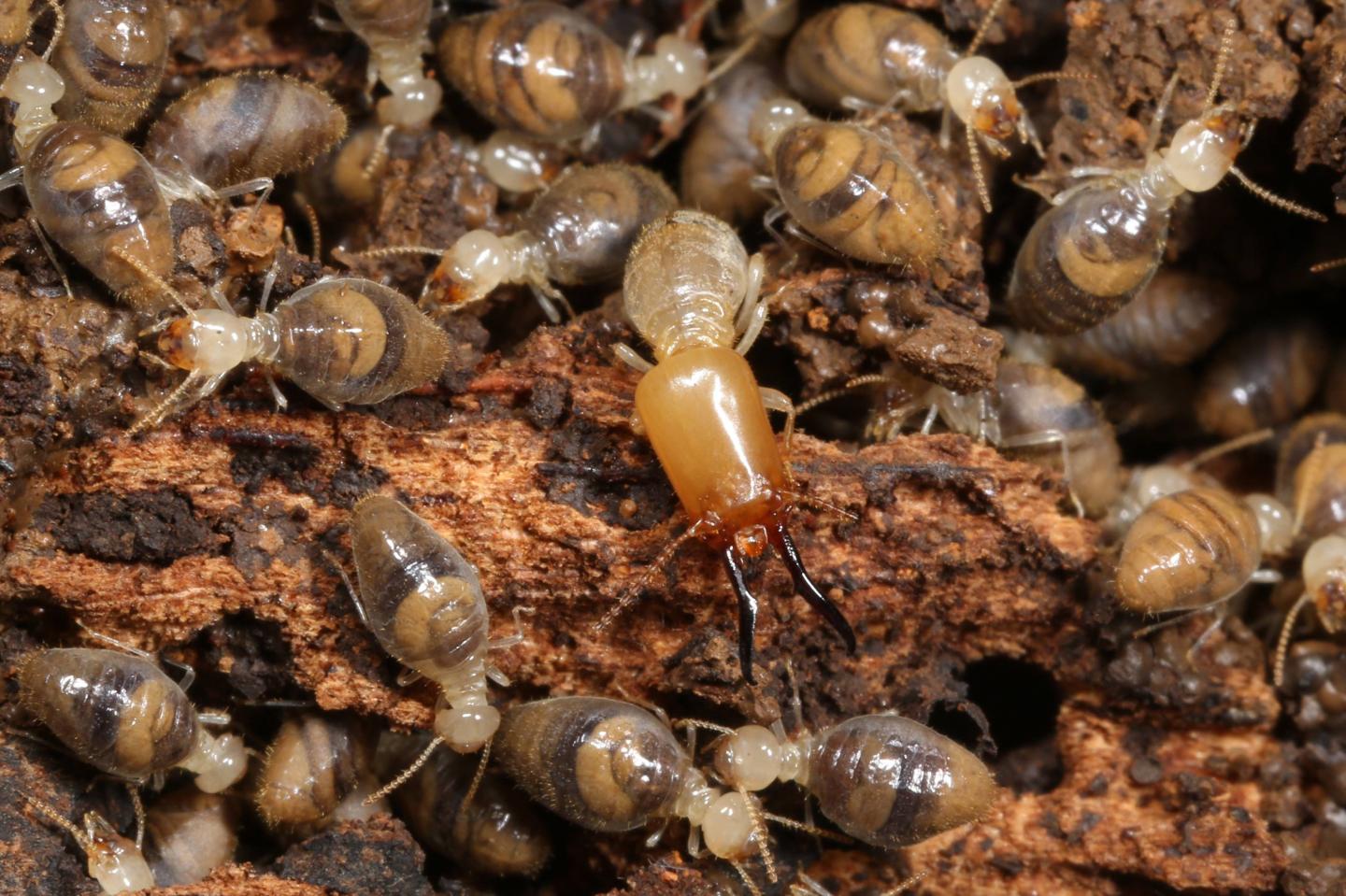
Credit: Jan Šobotník
Termites have achieved ecological dominance and now some of the ingredients for their success have been determined to lie in their unique gut microbiome 'factories' – which enable the creatures to eat wood, soil and other material generally not considered as food sources by other animals but rather as indigestible.
An international research paper, led by the University of Sydney, shows that the majority of micro-organisms in the termite gut is not found in any other animals and that they are not only inherited from parents but are also shared across colonies and among distantly related termite species.
"In order to digest wood and other material, termites rely on an intensive factory of millions of unique microorganisms in their gut, which can account for two-thirds of the termite's total body weight," said lead author Professor Nathan Lo.
The paper, "Rampant host switching shaped the termite gut microbiome", is published today in the high-impact journal Current Biology.
Professor Lo, who co-leads the Molecular Ecology, Evolution and Phylogenetics laboratory in the School of Life and Environmental Sciences, said termites had become heavyweights of the animal kingdom and despite their minute size, their global cumulative weight topped humans and was second only to cattle.
The paper says that the termite gut microbiome is among the most complex of any animal group and has evolved enabling termites "to diversity their food source from the ancestral state of wood … and to achieve ecological dominance across tropical and subtropical regions of the globe".
The study analysed not only termites that attack houses but also species that do not eat wood but instead feed on grass, leaf litter and pure soil.
Professor Lo said each microbe in the termite gut was like a little machine in a complex factory, which turns wood plus air into sugar and protein.
"There can be up to 5000 different species of microbe 'machines' in a termite gut, and many thousand clones of each kind," he said.
How these little machines came together to form the highly efficient termite gut factory has long puzzled biologists.
"Our research shows most of the microbes that live in termite guts are found nowhere else in nature and have become highly specialised for the difficult task of helping termites digest wood, which very few kinds of animals can do," Professor Lo said.
Researchers sequenced the DNA of the termite gut microbes and compared the DNA with all other kinds of microbes on earth, including from agriculture and industrial plants.
"We show that different termite species occasionally swap their microbes, most likely through aggressive encounters in nature, for example when they are competing for wood in the forest.
"In fights between soldiers of one colony with soldiers or workers of another colony, the body of the losing termite can be severed and its gut contents (containing the microbes) ingested by the winning termite," Professor Lo said.
What happens next – how each of the microbe machines carries out its particular function in the gut factory – largely remains a mystery.
"Learning about how termites convert wood and other biomass into sugars may be applicable to the production of sustainable biofuels," Professor Lo concluded.
###
The international team included Okinawa Institute of Science & Technology Graduate University as co-lead of the paper with the University of Sydney, with research spanning Germany, Belgium, Singapore and the Czech Republic.
WATCH: The World According to Termites excerpt co-produced by co-author Jan Šobotník https://youtu.be/WbQoQ_wpV-g
Media Contact
Vivienne Reiner
[email protected]
61-438-021-390
@SydneyUni_Media
http://www.usyd.edu.au/
Related Journal Article
http://dx.doi.org/10.1016/j.cub.2018.01.035





